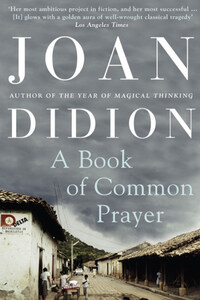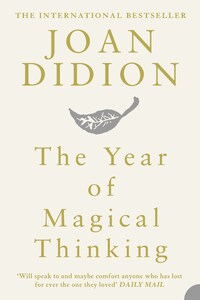4th Estate
An imprint of HarperCollinsPublishers 1 London Bridge Street London SE1 9GF
www.4thEstate.co.uk
This eBook first published in Great Britain by 4th Estate in 2017
Copyright © 2017 by Joan Didion
Foreword copyright © 2017 by Nathaniel Rich
Joan Didion photograph © Los Angeles Times Photographic Archives (Collection 1429). UCLA Library Special Collections, Charles E. Young Research Library, UCLA
Joan Didion asserts the moral right to be identified as the author of this work
A catalogue record for this book is available from the British Library
All rights reserved under International and Pan-American Copyright Conventions. By payment of the required fees, you have been granted the non-exclusive, non-transferable right to access and read the text of this e-book on-screen. No part of this text may be reproduced, transmitted, down-loaded, decompiled, reverse engineered, or stored in or introduced into any information storage and retrieval system, in any form or by any means, whether electronic or mechanical, now known or hereinafter invented, without the express written permission of HarperCollins
Source ISBN: 9780008257170
Ebook Edition © April 2017 ISBN: 9780008257187
Version: 2018-01-09
“The idea was to start in New Orleans and from there we had no plan.”
This has been the idea of many people who have come to New Orleans. It was the idea of the French explorer René-Robert Cavelier, Sieur de La Salle, who in 1684 set out to establish a city near the base of the Mississippi River, only to fail to find the river’s mouth from the Gulf of Mexico and, after three years, to be murdered by his mutinous crew. It was the idea of William Faulkner, who quit his job as postmaster at the University of Mississippi and moved to New Orleans because he despised taking orders, and of Tennessee Williams, who wrote in his diary, “Here surely is the place that I was made for if any place on this funny old world.” One does not have to stay long to learn how easily plans in New Orleans, like its houses, become waterlogged and subside into the mud, breaking to pieces. “This life,” wrote Williams, shortly before returning to New York, “is all disintegration.”
Joan Didion explained her decision to visit the Gulf Coast in her 2006 Paris Review interview: “I had a theory that if I could understand the South, I would understand something about California, because a lot of the California settlers came from the Border South.” It is a counterintuitive theory, for the South and the West represent the poles of American experience—the South drowning in its past, the West looking ahead to distant frontiers in a spirit of earnest, eternal optimism. “The future always looks good in the golden land,” Didion wrote in “Some Dreamers of the Golden Dream,” “because no one remembers the past.” In the South no one can forget it.
Didion toured the Gulf South for a month in the summer of 1970, making notes and recording conversations, but never completed a piece. She visited San Francisco in 1976 to cover the Patty Hearst trial for Rolling Stone, but found that she wanted mainly to write about her own childhood and the West’s conception of history. Didion’s notes, which surpass in elegance and clarity the finished prose of most other writers, area fascinating record of this time. But they are also something more unsettling. Readers today will recognize, with some dismay and even horror, how much is familiar in these long-lost American portraits. Didion saw her era more clearly than anyone else, which is another way of saying that she was able to see the future.
—
South and West is, in one regard, the most revealing of Didion’s books. This might seem a far-fetched claim to make about an author who has written about her ancestry, her marriage, her health, and, with painful candor, her grief—Didion’s readers are, after all, on familiar terms with the personal details of her life. But the writing itself—the cool majesty of her prose, written as if from a great, even empyreal distance, elevating personal experience into universal revelation—has an immaculacy as intimidating as Chelsea porcelain. South and West offers for the first time a glimpse inside the factory walls.
For each piece she reported, Didion converted pages of loose-leaf notebooks into scrapbooks of material related to her theme. She inserted newspaper articles and other writers’ works, like C. Vann Woodward’s “The Search for Southern Identity,” biographical summaries, lists of suggested themes, and overheard dialogue, which often seems taken from one of her novels. (“I never been anyplace,” says a Biloxi woman, “I wanted to go.”) In her notes we learn of her “reporting tricks,” which are less tricks than an intuitive genius for locating the people in a given community who will best reveal its character: the director of the local College of Cosmetology, the white owner of the black radio station, the bridal consultant of the largest department store. The notebooks also include transcriptions of her observations, which she typed at the end of each day. These notes represent an intermediate stage of writing, between shorthand and first draft, composed in an uncharacteristically casual, immediate style. There are sentences that are ideas for sentences, paragraphs that are ideas for scenes: “The land looks rich, and many people from Birmingham, etc. (rich people) maintain places here to hunt.” “The country way in which he gave me names.” “The resolutely ‘colorful,’ anecdotal quality of San Francisco history.” “The sense of sports being the opiate of the people.” “The sense of not being up to the landscape.” The effect can be jarring, like seeing Grace Kelly photographed with her hair in rollers or hearing the demo tapes in which Brian Wilson experiments with alternative arrangements of “Good Vibrations.”












